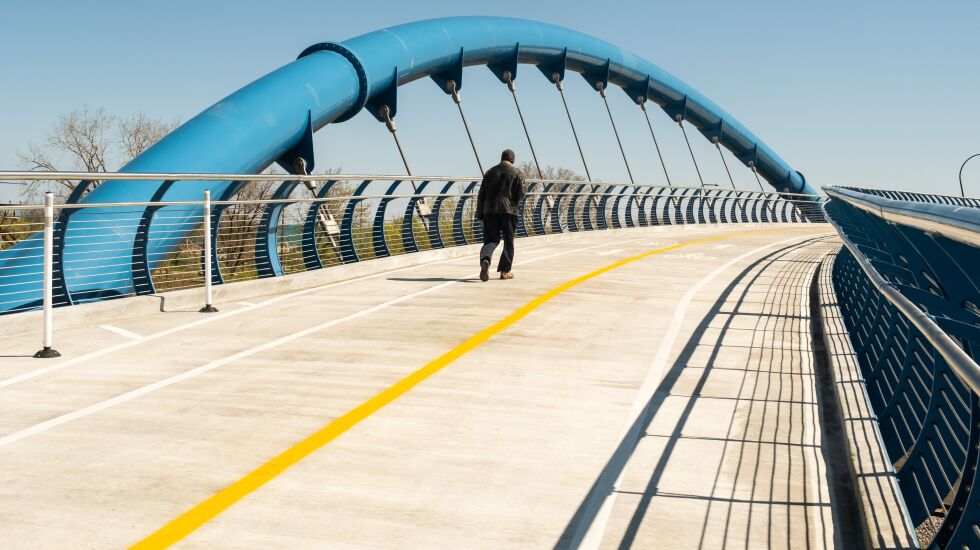
The communities of Bronzeville and North Kenwood are so close to Chicago’s lakefront, and yet for decades they were so far.
That’s because the South Side neighborhoods’ main non-vehicular connection reaching across DuSable Lake Shore Drive (and sets of Metra tracks) to the lakefront’s vast Burnham Park were a couple of narrow, aged footbridges that were only accessible by stairs.
But the city — rightfully — has been making up for this historic deficiency since 2016 by building new, accessible and visually iconic bridges over the blocks-long divide. The third span in the set officially opened at 43rd Street on Wednesday.
“Our lakefront is an amenity that should be available to all residents from all neighborhoods at all times,” Mayor Lori Lightfoot said at the opening ceremony. “And with today’s announcement, it is.”
Bridges and other infrastructure matter, everywhere
The $36 million bridge joins new crossings at 35th and 41st streets. The S-shaped, steel-arched 43rd Street span — painted in Chicago blue — is a twin of the one at 41st that opened in late 2018.
Both were designed by AECOM with Cordogan, Clark & Associates.
The 43rd Street bridge replaces one built nearly 70 years ago.
“If a bridge could be a shack, that’s what it looked like,” Ald. Sophia King (4th), who spoke at the ribbon cutting, said of the old bridge.
Said Transportation Commissioner Gia Biagi: “Infrastructure matters. And it matters everywhere, whether it’s a square or a sidewalk or a bridge like this.”
Which does lead to a design concern we have: The curved west ramp to the bridge swings within a few yards of the north side of an 1880s Victorian home at 43rd Street and Oakenwald Avenue.
Given the house is listed as a contributor to the North Kenwood Multiple Resource Landmark District — and people live in the home — more care perhaps could have been taken with the ramp’s placement.
A CDOT spokesperson said “additional landscaping work will continue around the bridge this spring, including trees which will help provide privacy for neighbors.”
Still, the bridge is a potential win for the city and the south lakefront.
In a city historically rife with inequities caused by bad and racially restrictive urban planning, it’s good to see barriers that made it difficult for residents of two predominantly Black areas to reach the beautiful lakefront finally being chipped away.
The Sun-Times welcomes letters to the editor and op-eds. See our guidelines.







